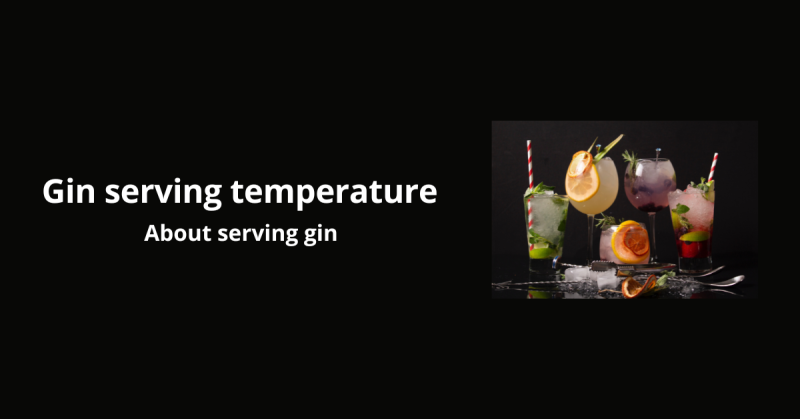When it comes to enjoying a gin and tonic or any other gin-based cocktail, the serving temperature is just as important as the quality of the gin itself. The temperature at which a gin is served can significantly impact flavor and overall drinking experience. In today’s article, I’ll look into the ideal serving temperature for gin and explore the factors which can affect it. It doesn’t matter if you are starting out with gin or if you are looking for more detailed information. I’ll give you some advice today.
The ideal serving temperature for gin
When it comes to serving gin, the ideal temperature range is between 42 and 50 degrees Fahrenheit (eq 5,5 to 10 degrees Celsius). Serving gin at this temperature allows the flavors of the gin to fully express themselves and provides a balanced and enjoyable drinking experience.
Gin is typically served chilled, either straight up or on the rocks. When served straight up, gin should be cooled to a temperature of around 42 to 46 degrees Fahrenheit (5.5 to 7.8 degrees Celsius). When served on the rocks, the ice will help to bring the temperature down to around 50 degrees Fahrenheit (10 degrees Celsius).
It’s important to note that the ideal serving temperature for gin depending on the type of gin and the ingredients from which is made. For example, gins that are heavily botanical or have strong juniper flavors may be more enjoyable when served slightly colder, while softer, more floral gins may be best served at a slightly warmer temperature.
Factors that affect the serving temperature of gin
There are several factors that can affect the serving temperature of gin and how it tastes when consumed. Some of the most important factors to consider include:
- Type of gin: Different types of gin can have different optimal serving temperatures. For example, gins that are heavily botanical or have strong juniper flavors may be more enjoyable when served slightly colder, while softer, more floral gins may be best served at a slightly warmer temperature.
- Serving glass: The type of glass that you use to serve gin can also impact its temperature. For example, a thin-walled glass will allow the gin to lose heat more quickly, resulting in a colder drink. Conversely, a thicker-walled glass will retain heat better, resulting in a warmer drink.
- Mixer: The type of mixer that you use with your gin can also impact its serving temperature. For example, using a cold mixer such as tonic water or soda water will help to chill the gin, while using a warm mixer such as hot water or tea will cause the gin to warm up.
- Storage: How you store your gin can also affect its serving temperature. Storing gin in a cool, dark place will help to ensure that it stays at a consistent temperature and is ready to be served chilled when you’re ready to enjoy it.
By considering these factors, you can ensure that your gin is served at the optimal temperature for maximum enjoyment.
Tips for serving gin at the right temperature:
- Store gin in a cool, dark place: Storage is key to ensuring that your gin is ready to be served chilled when you’re ready to enjoy it. Store your gin in a cool, dark place to help it retain its temperature and ensure that it is ready to be served chilled.
- Use ice to chill gin: If your gin is not cold enough, adding ice helps to bring the temperature down to the ideal range. Just be sure to use enough ice to properly chill the gin without diluting it too much.
- Experiment with different serving temperatures: As mentioned previously, the ideal serving temperature for gin can vary depending on the type of gin and the ingredients it is made with. Experimenting with different serving temperatures can help you discover the best temperature for your personal taste.
- Use a chilled glass: If you’re serving your gin straight up, be sure to use a chilled glass to help keep the drink cold. You can chill the glass by placing it in the freezer for a few minutes before serving.
Conclusion:
In conclusion, serving temperature is important factor. The ideal temperature range for serving gin is between 42 and 50 degrees Fahrenheit (5,5 to 10 degrees Celsius), and this temperature can impact the flavor and experience. There are several factors that can affect the serving temperature of gin, including the type of gin, the serving glass, the mixer, and how it is stored.
By these factors and following the tips for serving gin at the right temperature, you can ensure that your next gin-based drink is served at the optimal temperature for maximum enjoyment.
